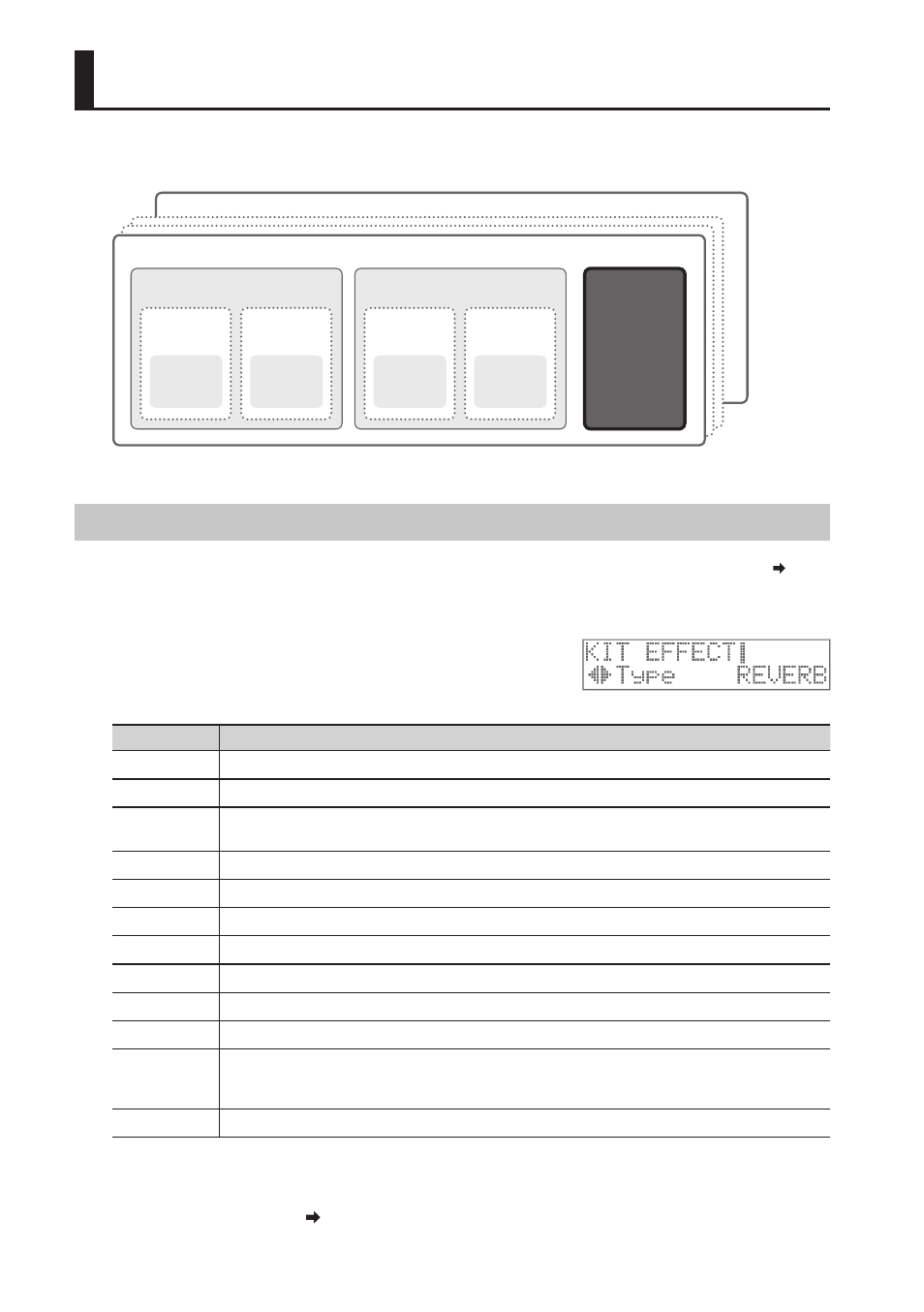Using a kit effect, Selecting the effect type – Roland TM-2 - Trigger Module User Manual
Page 12

12
Using a Kit Effect
You can use a kit effect to modify the sound of the instruments. You can choose from numerous types such as
effects that distort the sound, make it richer, or add cyclic modulation.
KIT 99
KIT 01
EFFECT
HEAD
TRIG IN 1
INST
INST
RIM
HEAD
TRIG IN 2
INST
INST
RIM
* One kit can use only one type of kit effect.
Selecting the Effect Type
Before you continue, turn on the “EffectSend” of each instrument to which you want the effect to apply. p. 11
1.
Use the [-] [+] buttons to select a kit.
2.
Press the [INST] button.
3.
Press the [>] button to select the “KIT EFFECT–Type.”
4.
Use the [-] [+] buttons to select Type.
Effect type
Type
Explanation
THRU
The effect won’t be applied.
DELAY
Stereo delay
TAPE ECHO
A virtual tape echo that produces a realistic tape delay sound. This simulates the tape echo section of a
Roland RE-201 Space Echo.
CHORUS
This applies a chorus effect.
FLANGER
The flanging effect gives a twisting, jet-airplane-like character to the sound.
PHASER
A phase-shifted sound is added to the original sound and modulated.
EQUALIZER
This adjusts the tone as a equalizer.
COMP
Flattens out high levels and boosts low levels, smoothing out fluctuations in volume.
WAH
This produces a wah effect by modifying the filter in correspondence with the volume of the performance.
DIST
This effect distorts the sound to create long sustain.
RINGMOD
This is an effect that applies amplitude modulation (AM) to the input signal, producing bell-like sounds. You
can also change the modulation frequency in response to changes in the volume of the sound sent into the
effect.
REVERB
Adds reverberation to the sound, simulating an acoustic space.
5.
Press the [>] button to select an effect parameter, and use the [-][+] buttons to adjust the value.
The effect parameters differ depending on the type.
For details on the parameters ”Sound List” (PDF)
